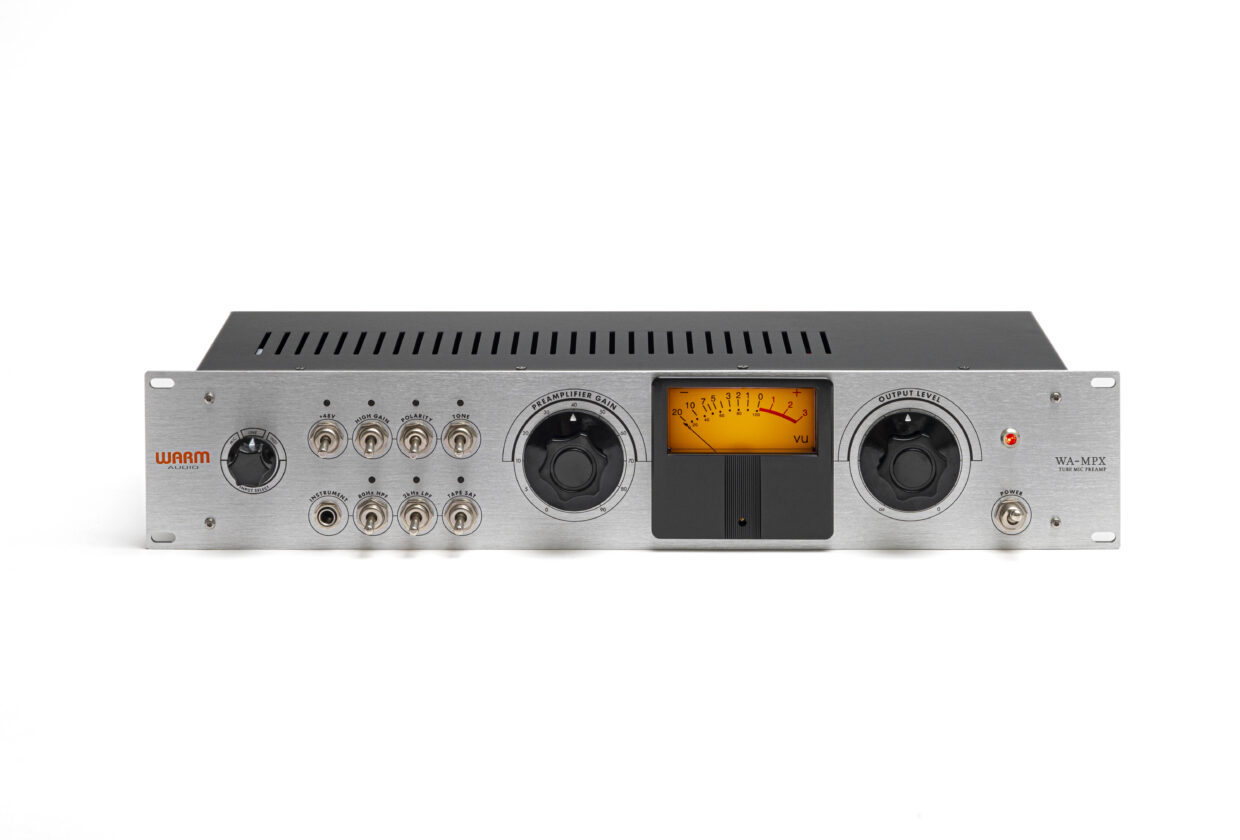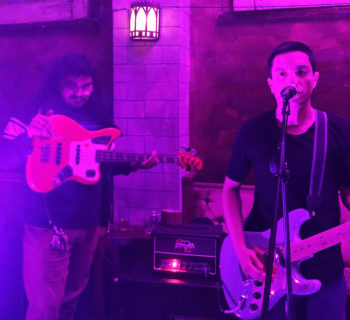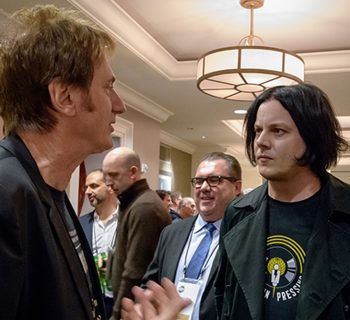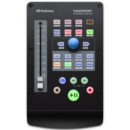Warm Audio’s WA-MPX single-channel and WA-2MPX dual-channel tube microphone pre-amps owe their circuit design to Ampex Corporation’s 350/351 tape recorder channel electronics. Models 350 and 351 were popular in the 1950s in the U.S. and were used on many (if not most all) nascent popular music recordings at the time. There were not a lot of great choices in those days (just after WWII and the Korean War) and you could say the sound of those classic hit records was due in part to those tape recorders.
As a personal aside, when I first started in a small recording studio outside of Los Angeles, it was an old mono Ampex 351 machine that I first learned recording engineering and tape editing. Unbeknownst to me at the time was that they also had a built-in microphone pre-amp!
The WA-MPX
I received a Warm Audio WA-MPX single channel pre-amp (the WA-2MPX is two WA-MPX’s in one 2U cabinet) for review and immediately, I found over 90dB of gain available in high-gain mode. The 2U front panel looks like stainless steel and also, like the original 5U 351 unit, uses the same silkscreened font and overall graphic design. The microphone input and output transformers are custom-wound to the original specifications by CineMag. Also like the original units, there are three tubes: two 12AX7s and a single 12AU7.
There are modern features available on the MPX, starting with a switchable 80Hz high pass filter switch that I found effective but not too noticeable in action. There is also a 2-kHz low pass filter that works for overly bright sources and/or microphones when you want a more mid-range focused sound.
The MPX does not have the usual microphone pad switch because in the normal gain mode with up to 70dB of gain, the Preamplifier Gain control ranges all the way down to 0dB making a mic pad unnecessary. The High Gain mode adds another tube for an additional 20dB of gain usually required for low output microphones and/or recording quiet sources.
The A/B
To get an idea of what the WA-MPX actually sounds like, I tried a quick comparison—an A/B using a Jensen microphone splitter transformer model JT-MB-E. The splitter has one microphone input and three separate, isolated outputs. Using it allows my single Soundelux U195 condenser mic to feed both the WA-MPX and my Millennia Media HV-37 mic pre-amps at the same time and without compromise.
For all recording at my studio, I use a Crane Song Interstellar Quantum analog-to-digital converter/master clock. Its inputs received the two pre-amps’ outputs for recording to two separate tracks in Pro Tools. After recording, I “nulled out” the two tracks (one track flipped in polarity) so that both were equal in electrical playback level. They nulled perfectly and I heard no additional artifacts—distortion products.
During a male voice-over session, I immediately discovered the differences between the WA-MPX tube pre-amp and the HV-37—sometimes referred to as “a wire with gain”—it uses no tubes or transformers in its circuit.
Along with another recording engineer, we found by comparing side-by-side recordings that the WA-MPX has a very subtle thicker sound in the high bass frequency range. Clarity was similar for both units—I ran the MPX in the cleanest mode possible with the Output control full up and just enough Preamplifier Gain for the same recording level as the HV-37. As expected, the MPX-WA has a tonal character—a subtle upper mid-range edge compared to the pristine cleanliness of the Millennia Media HV-37.
So it comes down to what you’re looking for in a recording chain—both results are useful in the recording studio. The WA-MPX was quiet and clean as was the HV-37.
Acoustic Guitar
Recording an acoustic guitar (Gibson J-28) was first on a session I had planned. I used an Aspen Pittman Designs AP 1B-FET large diaphragm condenser microphone placed over about the 12 fret and about 8-inches away. Again with the output level full up and Preamplifier Gain at 60 gave the cleanest sound and I liked switching in the 80-Hz high-pass filter on this full-bodied guitar for loud rhythm strumming. Later with the mic right over the sound hole, the HPF was a necessity.
I tried the High Gain mode swapping out the condenser for a lower output Shure MV-7 dynamic. This produced a little brighter sound with gain at 50 and again, output full up. The resultant guitar sound was less dynamic and steady in level using this mic and setting. Not as ‘high fidelity’ as using the condenser but perfect for a utility rhythm guitar parts that fit into the track easily.
Electric Guitar
Back on regular gain, I next recorded a Telecaster electric through my small 5-watt tube MOD 102+ amp from MOD kits DIY. I used a Mojave Audio MA-D dynamic mic positioned on the outside of the cone but aimed toward the center of the Celestion 30 12-inch speaker. Clean electric sounds were not hard to come by here, starting the Warm WA-MPX set to about 50 of Preamplifier Gain and near max output level.
I came to realize the true value of the MPX is that it is a very useful and flexible pre-amp with so many possible colors of overdriven, saturated tones possible. Anybody producing guitar-oriented music should have this!
For any recording, just turning up the gain and turning down the output works to get an overdriven sound, but there is a Tape Saturation switch that adds a natural compression and harmonic distortion reminiscent of old analog tape machines running at 15 or 7 1/2-ips. This effect is possible using any of the unit’s three inputs: Mic, Line, and Instrument.
I took the same Telecaster guitar “direct” through the ¼-inch instrument input and used Tape Saturation and the Tone switch. Tone switches primary windings on the input transformer from 600-ohms to 150-ohms. Like a secret recipe, by using different switch combinations of Tone, Saturation and High Gain, I was able to get great guitar sounds using the MPX and a microphone or the MPX inserted as a line level processor like a compressor.
The MPX will function as an awesome re-amping unit for already recorded guitars or any audio track you want to “rough up.” The 2-kHz low-pass filter also smoothly reduces the amount of fizz distortion if required.
A great all-around tube preamp/processor to have at the ready in your studio that sounds great for recording any instrument or vocal, the Warm WA-MPX is the new “must-have” for me! The WA-MPX, as tested, sells for $749 MSRP and the two-channel version WA-2MPX sells for $1,399 MSRP.
warmaudio.com/WA-MPX














